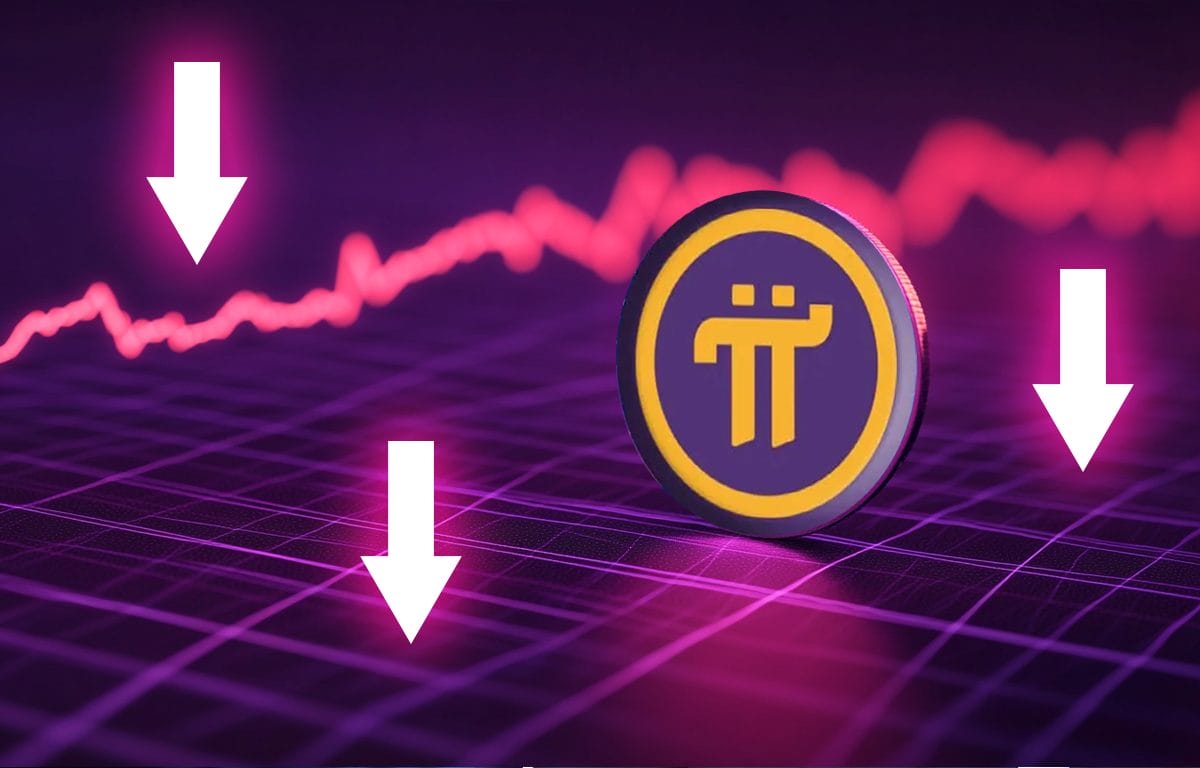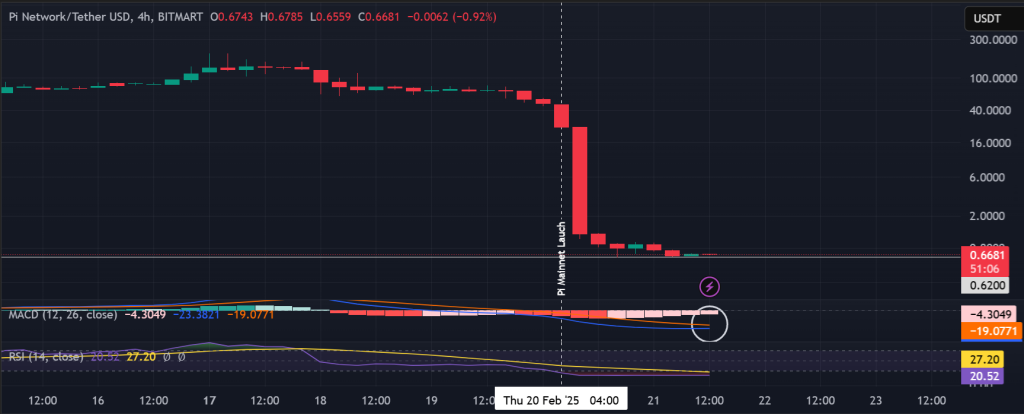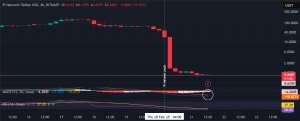Last updated:
 Why Trust Cryptonews
Why Trust Cryptonews

Pi Coin is on the chopping block after its highly anticipated mainnet launch gave way to a substantial 66.35% crash.
While the first hour of trading saw Pi surge 36% to $1.99, those that followed saw profit-taking spark mass panic selling take the altcoin down to $0.67.
Meanwhile, early investors grapple with unrealized losses, waiting for their tokens to migrate to the mainnet.
All in all, $1.37 billion in trading volume was exchanged over the 24 hour period.
While global crypto exchanges rush to capitalize on the Pi Network hype, listing its long-awaited token, Bybit CEO Ben Zhou has openly criticized the project and refuses to list the token.
Pi Network has been embroiled in controversy for years, drawing criticism for its opaque operations, delayed mainnet launch, and a recruitment model akin to a pyramid scheme.
On February 20, Zhou doubled down on his past skepticism, citing an official warning from Chinese authorities that labelled the project as a potential scam.
Beyond questions of legitimacy, the token launch itself has sparked further backlash over valuation discrepancies and accessibility issues.
Unofficial markets saw Pi tokens trading above $70 before launch, stoking early investor optimism.
Yet, when the token finally listed on centralized exchanges at just $1.97—with a staggering $180 billion fully diluted valuation—lapse liquidity left many investors unable to sell.
Complaints flooded social media as users reported being locked out due to unresolved KYC issues —some had been waiting for verification for years.
As soon as trading opened, the market reaction was swift.
PI price Analysis: Will Pi Network Crash to Zero?
Despite early setbacks, some traders remain hopeful that further exchange listings could revive the coin’s momentum.
Pi Coin was immediately listed on major centralized exchanges (CEXs) like OKX, Gate.io, MEXC, and Bitget.
Notably, Binance—the world’s largest crypto exchange—has received an overwhelming 86% support in a poll set to close on February 27.
Looking at technical indicators, the panic selling does seem to have come to a head.

The Relative Strength Index (RSI) has plateaued at 20, far surpassing the oversold threshold of 30. Establishing an uptrend from here could suggest seller exhaustion.
Meanwhile, the MACD line is en route to form a golden cross with a crossover above the signal line—the bulls may affirm control.
In the near term, the support established at $0.62 must hold to avoid further declines as the token finds itself in a discovery phase.
This New ICO Unlocks Higher Potential Gains
With rug pulls and market wiping sell-offs, which are all too common for newer coins, it can be hard to find those 10-100x opportunities.
It’s no surprise Best Wallet ($BEST) has drawn attention with its in-app “Upcoming Tokens” feature, renowned for delivering high-gaining trading alpha by spotlighting emerging crypto projects.
These very features position Best Wallet as the latest innovation in self-custody solutions—and a viable competitor to the likes of MetaMask.
The non-custodial wallet supports over 1,000 cryptocurrencies, utilizes Fireblocks MPC-CMP technology, and includes a staking aggregator to maximize yield opportunities.
Best Wallet is already making waves, raising over $10.3 million in the presale for its new $BEST utility token. Its app is already featured on Google Play and the App Store.
To learn more about Best Wallet, follow its official X, Telegram, or visit the Best Wallet website.



